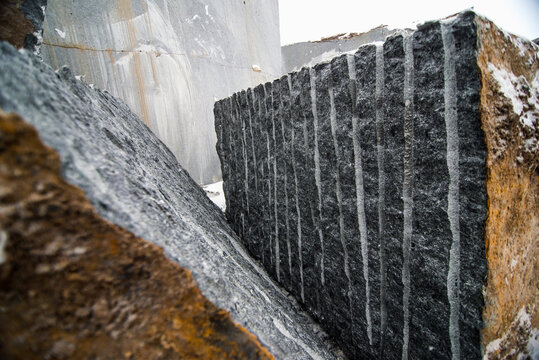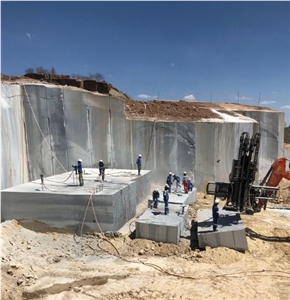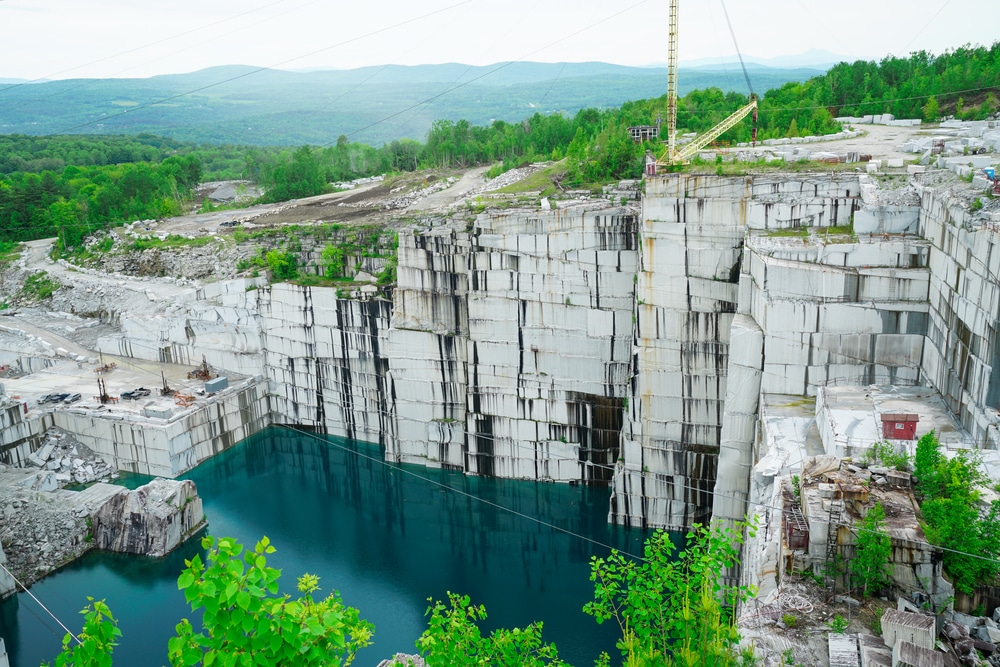Letting Loose the Beauty and Durability of Granite Quarry: A Trip With Time
Granite quarries stand as testaments to both the geological marvels of our world and the enduring workmanship of humankind. The trip through time that granite quarrying stands for is a compelling story of advancement, perseverance, and the intricate dance between nature and sector. Comprehending the beginnings of this age-old method, the development of methods and tools utilized, and the contemporary importance of granite quarrying unveils a tapestry rich in history and importance. As we peel back the layers of time and dig into the detailed world of granite quarrying, we uncover a tale that not only showcases the beauty and resilience of this stunning stone however also loses light on the profound effect it has carried civilizations past and existing.

The Origins of Granite Quarrying
In the annals of background, the beginnings of granite quarrying can be traced back to ancient human beings where the mission for durable structure materials fueled the emergence of this timeless craft. From the impressive structures of old Egypt to the grand holy places of Greece, granite has been respected for its stamina, elegance, and long life. The Egyptians, with their innovative quarrying strategies, were among the very first to draw out granite widespread, utilizing it to construct huge pyramids and complex sculptures that have withstood the test of time.
As civilizations advanced, so did the methods of quarrying granite. The Romans additionally fine-tuned the methods, developing tools and equipment to extract and transport granite over huge ranges for their architectural jobs. The sturdiness and aesthetic charm of granite made it a treasured material for cathedrals, monuments, and sculptures throughout the ages.
Today, the legacy of old quarrying practices lives on, with contemporary innovation boosting effectiveness while still paying homage to the workmanship of our forefathers. The origins of granite quarrying work as a testament to human ingenuity and the long-lasting allure of this worthy stone.
Tools and Strategies of Quarrying
Quarrying granite needs specific equipment to remove the rock from the planet successfully and with precision. Modern quarries utilize diamond-wire saws, high-powered drills, and dynamites to damage apart the granite in a regulated fashion.
In addition to advanced equipment, traditional hand devices are still used in specific quarrying procedures to make certain fragile accuracy in extracting the stone. Chisels, hammers, and wedges are employed by skilled quarry employees to separate granite blocks along natural fractures, a strategy that has been passed down via generations.
In addition, techniques such as drilling vertical and horizontal holes for inserting feathers and wedges, as well as the controlled use of explosives in strategic locations, allow quarry employees to remove granite efficiently while maintaining the honesty of the stone. The consistency between modern-day innovation and conventional workmanship is essential to the lasting quarrying of granite for generations to come.
Evolution of Granite Quarries
The transformation of granite quarries gradually reveals an interesting narrative of technical innovation and market evolution. From old times where hand-operated tools like knives and hammers were utilized to extract granite blocks, to the industrial revolution presenting steam-powered machinery for faster quarrying, the development of granite quarries has been marked by considerable innovations. In current years, the advent of ruby wire saws and advanced drilling technologies has transformed the extraction procedure, enabling extra precise cuts and lowered wastefulness of resources.

Granite Quarrying in Modern Times
The development of granite quarrying techniques from historic dependence on guidebook tools to the sophisticated approaches of modern times underscores an impressive trip of technical development and sustainability methods within the market. In modern granite quarrying, progressed equipment such as original site ruby cable saws, high-capacity excavators, and digital drilling equipment have actually transformed the extraction process. These tools enhance performance, accuracy, and safety and security, permitting bigger amounts of granite to be extracted in a shorter duration compared to conventional approaches.
Additionally, modern-day quarrying methods focus on sustainability and environmental stewardship - granite quarries in south africa. Firms are increasingly embracing eco-friendly methods like water recycling systems, dust reductions innovations, and recovery plans for tired quarries. These campaigns aim to reduce the ecological effect of granite extraction, conserve natural deposits, and bring back quarried landscapes to their initial state
Additionally, the integration of electronic modern technologies like drones, general practitioner monitoring, and 3D modeling has actually allowed quarry drivers to maximize procedures, enhance decision-making, and make sure the sustainable management of resources. By embracing technology and sustainability, the granite quarrying industry in modern published here times remains to thrive while maintaining ecological responsibility.

Protecting and Safeguarding Granite Quarries
Amidst the developing landscape of granite quarrying practices, preservation and security of these important natural sites have come to be paramount worries for market stakeholders and ecological advocates alike. As granite quarries remain to be a vital resource of this desired rock, it is necessary to embrace lasting methods that guarantee their durability and guard bordering communities.
Maintaining granite quarries involves implementing effective recovery plans to bring back the land post-extraction. granite quarries in south africa. This procedure consists of improving the terrain, replanting native greenery, and producing environments for wild animals to prosper. By bring back quarries to their natural state, the ecological effect can be decreased, and the charm of these landscapes can sustain for future generations to appreciate
Additionally, shielding granite quarries calls for implementing laws that govern accountable quarrying techniques. This consists of surveillance water quality, regulating dirt exhausts, and handling noise degrees to minimize disruptions to the setting and neighboring communities. Collaborative initiatives between industry players, governmental bodies, and conservation groups are important in upholding these standards and making certain the lasting usage of granite quarries.
Conclusion
Finally, the journey through time in granite quarrying exposes the beginnings, devices, strategies, and evolution of this method. The modern age has actually brought improvements in quarrying techniques, allowing the conservation and protection of these important natural deposits. It is essential to proceed to promote sustainable practices to make sure the elegance and durability of granite quarries for future generations to appreciate.